Tarot has been experiencing a 21st century renaissance, and the 21st century loves nothing more than capitalizing on spirituality. Contemporary tarot decks tie in with myriad special interests, art styles, spiritual paths, and fandoms. In recent years, officially licensed pop culture tarot decks have become especially popular among fans and tarot readers.
The tarot traditionally comprises 78 cards total, with 22 major arcana and 56 minor arcana. The major arcana use archetypal images to represent important events and lessons, following a metaphorical path through life’s mysteries known as “the Fool’s journey.” The minor arcana are suited cards that concern themselves more with daily life and mundane situations.
Fantasy fandoms—whether high fantasy sagas or ’90s cult classics—provide particularly rich ground on which to map the archetypes of the tarot. With high fantasy, it’s particularly easy to literalize certain archetypes: a wizard as the Magician card, for instance, or a jester as the Fool.
The traditional suits of wands, cups, swords, and pentacles (or coins) are often substituted with in-universe objects from the fandom, such as “stakes” instead of “wands” in the Buffy deck, or “potions” instead of “cups” in the Hocus Pocus deck. Most of these decks include accompanying guidebooks, many of which introduce original spreads—specific layouts of the cards, in which each card placement offers a particular answer or insight.
Vanessa Lopez, copublisher of Insight Editions, says that “we [at Insight] love thinking of ways that we can reinterpret these characters in films and television shows that we love, and give fans—even for ourselves—cool new pieces of art, characters in ways that you haven’t quite seen them before.”
Here, we take a Fool’s journey through some favorite fandoms. Most of these characters were mixed up with esoteric knowledge anyway.
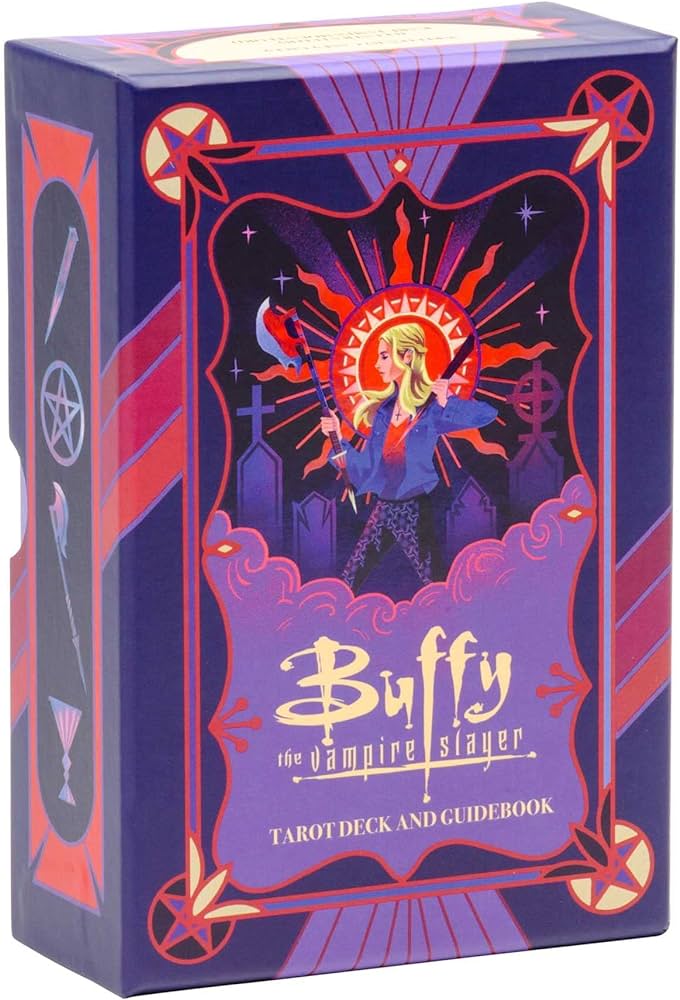
Buffy the Vampire Slayer Tarot Deck and Guidebook
A Buffy the Vampire Slayer tarot deck was slated for release by Dark Horse Comics in August 2008, then canceled in June of that year with a cryptic note about “circumstances beyond our control.” After over a decade, you can imagine fans’ excitement when a new Buffy deck (unrelated to its predecessor) finally dropped earlier this year. Mountford’s art depicts the Scooby Gang and their associates in bright, flat designs. Gilly’s text maintains a Buffy-ish tone, with instructions like, “When a Major Arcana card appears in a reading, it signifies massive changes—ones that will help you grow into a knowing-stuff type person.”
Wands are “Stakes,” Cups are “Chalices,” Swords are “Scythes,” and Pentacles remain the same.
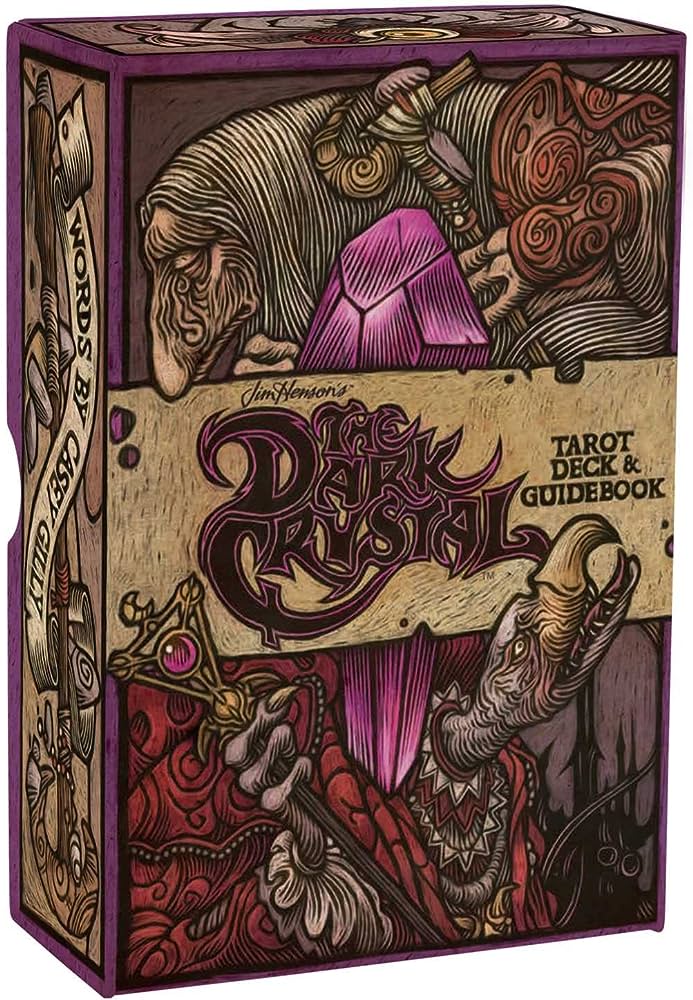
The Dark Crystal Tarot Deck and Guidebook
Tomás Hijo’s meticulous printmaking process yields gorgeous results in his tarot illustrations. The Dark Crystal deck resembles a set of mystical carvings, with characters from the 1982 film dramatically posed as archetypes of the Major Arcana. The sage Aughra as the High Priestess feels particularly spot-on: Aughra “lives between two worlds, deciphering the secrets of the universe.”
Wands are “Shards,” Cups are “Vials,” Swords are “Stones,” and Pentacles are “Gems.”
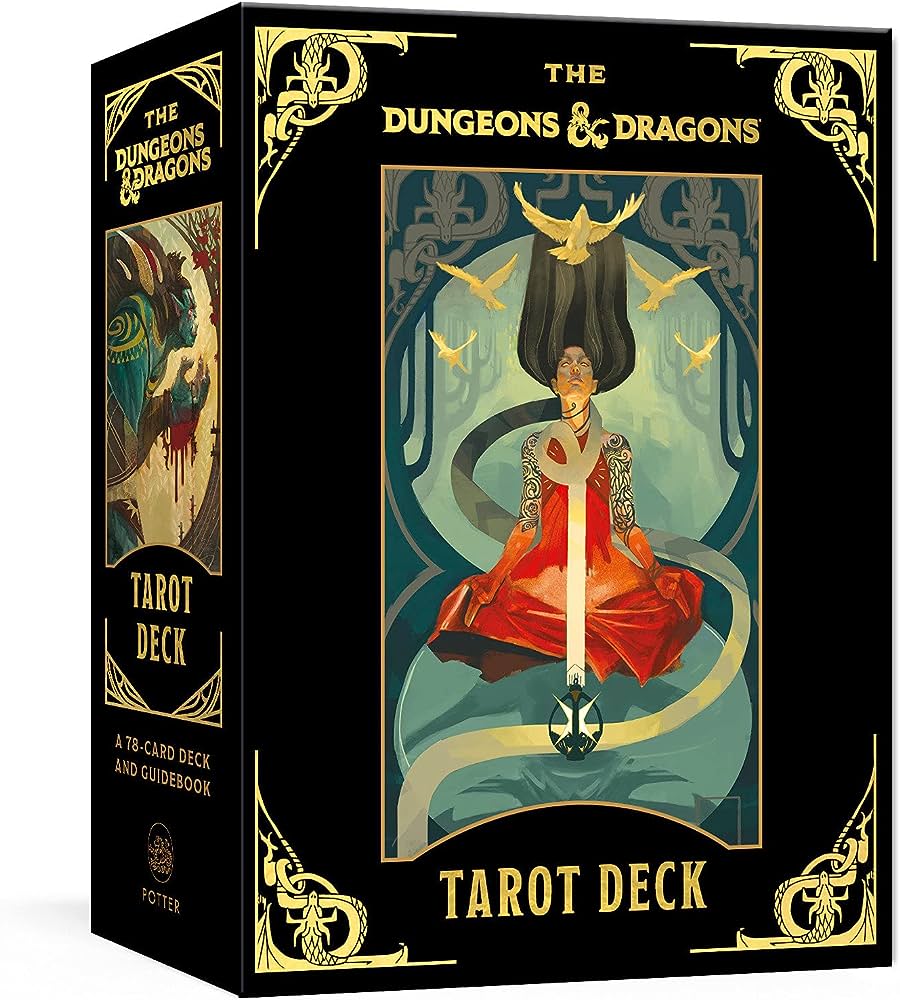
The Dungeons & Dragons Tarot Deck
Uniquely, each card in this deck includes an “encounter” that can be used within a querent’s game of Dungeons & Dragons—whether to kickstart a campaign or to add a mid-adventure twist. For example, the encounter accompanying the Hierophant—a card that can indicate spiritual guidance—instructs, “You find a holy book written by a wise sage that contains a cryptic secret hidden within it.” Fred Gissubel’s artwork is lush and intricate; matte, textured cardstock adds a nice touch.
The suits are mapped to abilities within D&D: Wands are “Strength,” Cups are “Wisdom,” Swords are “Intelligence,” and Pentacles are “Charisma.”
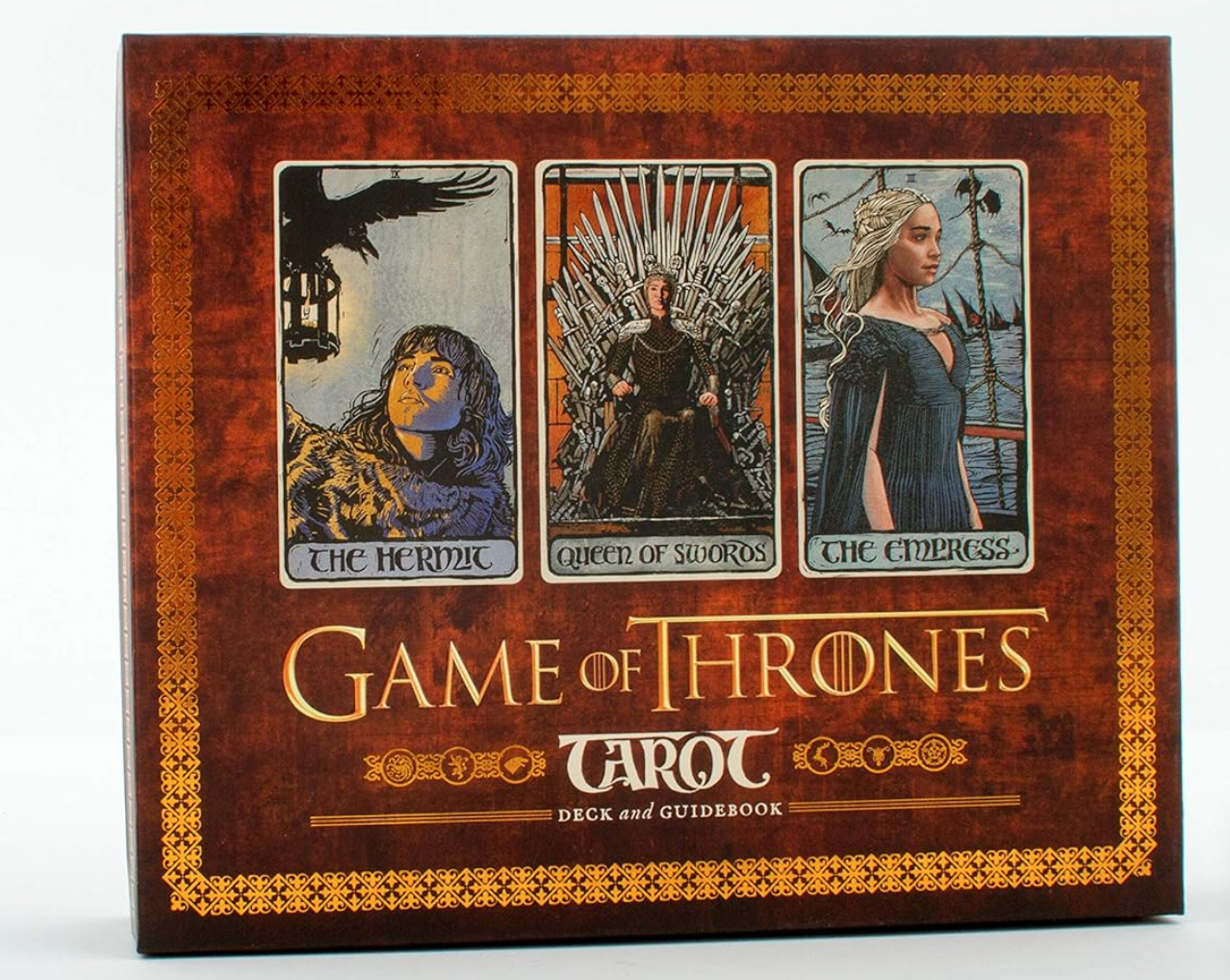
Game of Thrones Tarot
Richly detailed illustrations bring life to familiar faces, and the accompanying text draws fairly thorough connections between Game of Thrones’ personae and the Major Arcana. “Archetypes are the foundation of every great tale—and Game of Thrones is an outstanding story, a rich weave,” says author Liz Dean. Daenerys Targaryen, Mother of Dragons, is the matriarchal Empress; courageous knight Brienne of Tarth is Strength; honorable Ned Stark is Justice. A hinged, gilded box and a hardcover guidebook make the boxed set a beautiful object in its own right.
Wands are “Spears,” but the suits otherwise retain their traditional names.
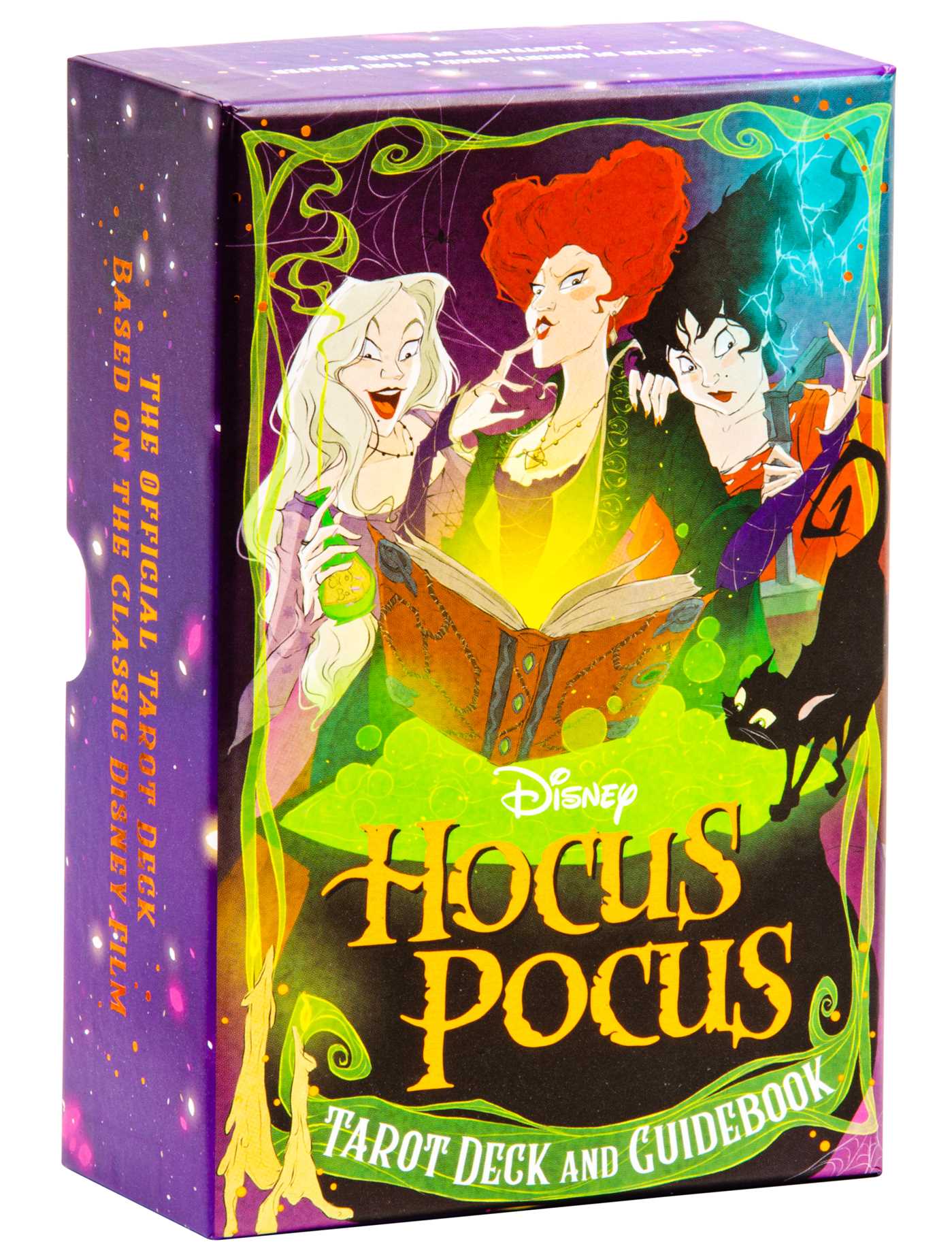
Hocus Pocus Tarot Deck and Guidebook
In Hocus Pocus, the Sanderson Sisters see a man in a devil costume on Halloween night and refer to him as “Master.” Rather than a Devil card, the Hocus Pocus deck has “the Master.” Siegel and Schafer write, “the Master offers the Sanderson Sisters candy, but they believe he has the authority to offer them much more….Your desire for material gain has overpowered your search for spiritual enlightenment.” For a card that symbolizes the pleasures and temptations of the material world, this tracks. DreaD.’s character illustrations are spindly and spooky, the scenes surrounded by an eerie green glow.
Wands are “Candles,” Cups are “Potions,” Swords are “Lightning,” and Pentacles are “Pumpkins.”
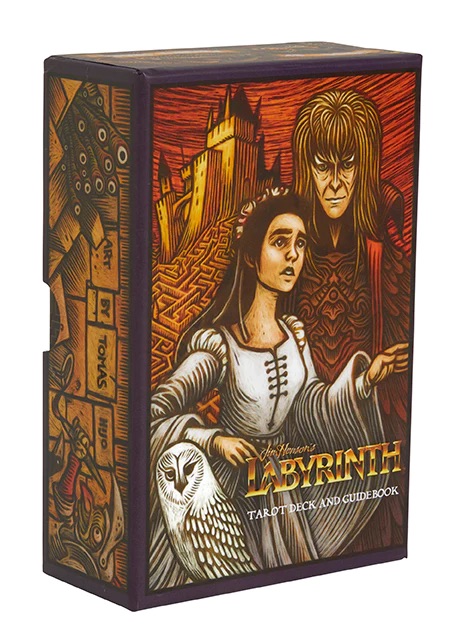
Labyrinth Tarot Deck and Guidebook
Tomás Hijo’s illustrations capture Jim Henson and Brian Froud’s characters in a captivating woodcut style. Classical decks show a warrior standing inside a chariot for the Chariot card; the Labyrinth’s Chariot depicts Sir Didymus (a small dog) astride his noble steed (a less small dog). “Be bold and courageous, like Sir Didymus,” Siegel writes, “and you’ll achieve what you’ve set out to accomplish.” Very appropriate, very adorable. One of the guidebook’s accompanying spreads is the “Door Knockers’ Conundrum,” referring to the film’s cantankerous door knockers—a five-card spread designed to give insight into a choice.
Wands are “Poles,” Cups are “Pots,” Swords are “Feathers,” and Pentacles are “Junk.”
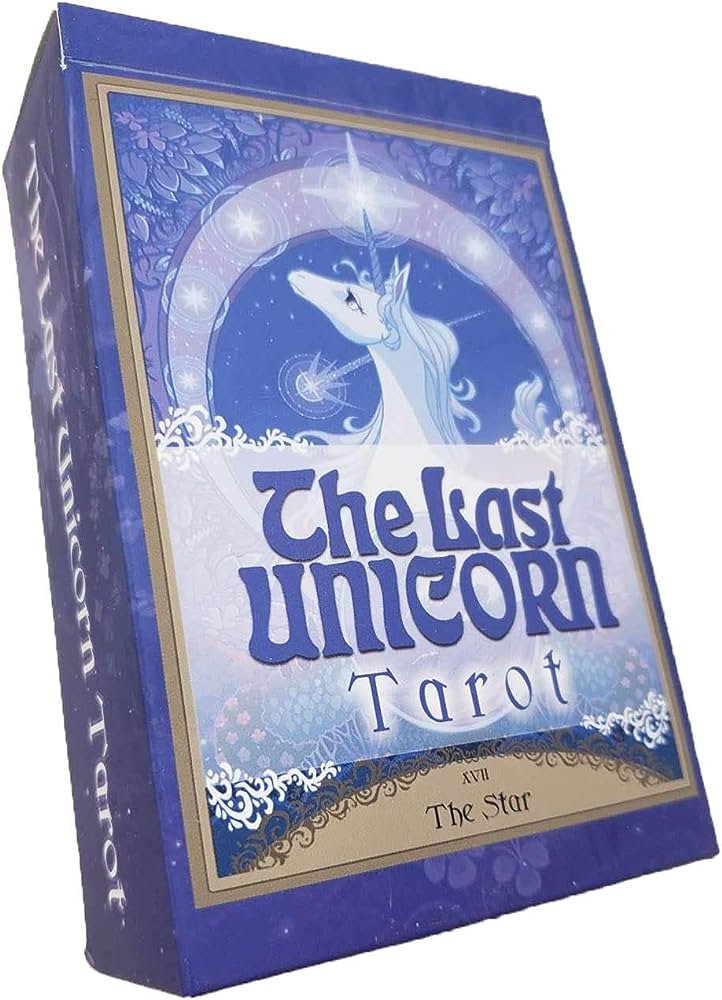
The Last Unicorn Tarot
The Last Unicorn, a 1968 Peter Beagle novel that became a 1982 animated feature, is rife with magic and symbolism that smoothly translates to the tarot. The Red Bull is the Devil, Mommy Fortuna is the miserly Four of Coins, King Haggard is the Emperor, and Death is the wine-drinking skeleton. Much of the artwork uses imagery from the classic Rider-Waite-Smith tarot deck: the Three of Swords, a heart pierced by three swords in the Rider-Waite-Smith, is here shown as a heart pierced by three swords being tearfully held by Molly Grue; where the Two of Swords historically depicts a blindfolded woman carrying two swords, here we have the same image with Prince Lir in the woman’s place.
The suits retain their traditional names.
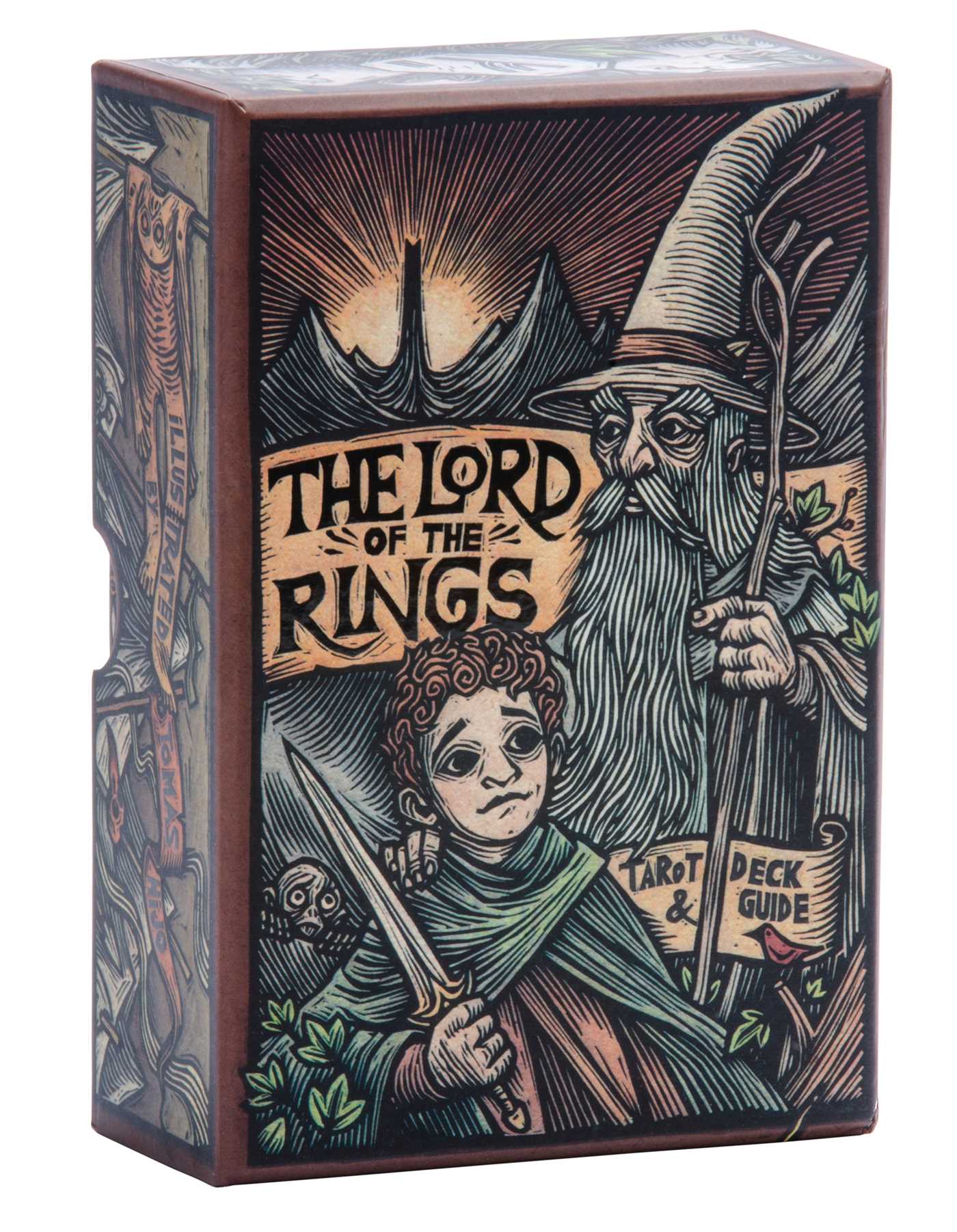
The Lord of the Rings Tarot Deck and Guide
Gilly and Hijo—the same author/illustrator team behind the Dark Crystal deck—again offer a unique vision of familiar characters. Rather than a booklet, the guide accompanying this deck is a fold-out parchment offering interpretations, instructions, and spreads. “Second Breakfast” is a particularly charming spread designed to help the querent identify how to reclaim their energy when feeling drained or “in need of nourishment.”
Pentacles are “Rings,” but other suits retain their traditional names.
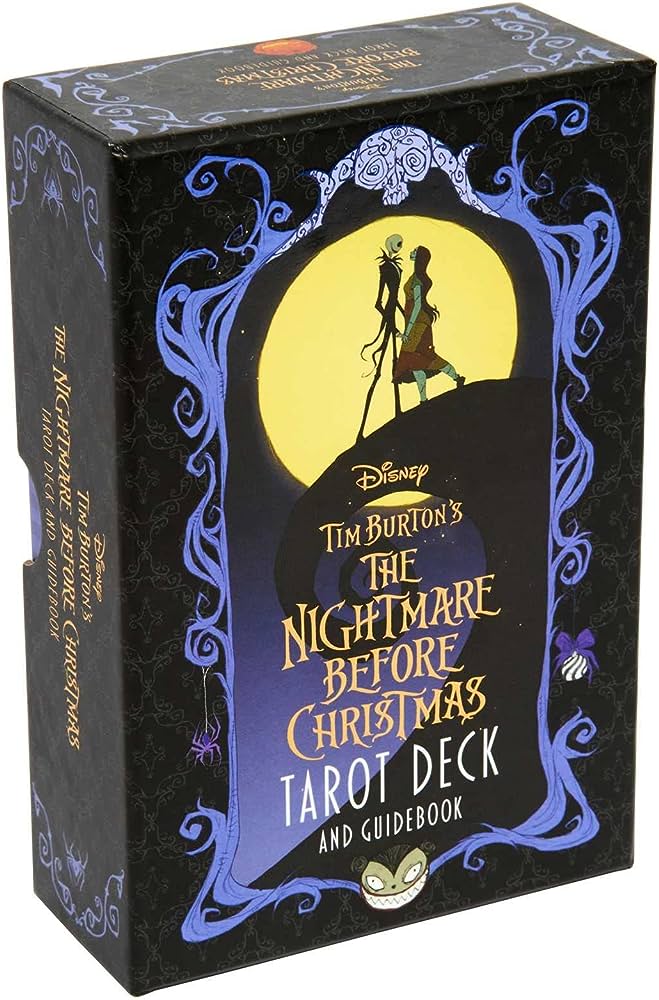
The Nightmare Before Christmas Tarot Deck and Guidebook
Tim Burton’s beloved ’90s characters are captured by Abigail Larson—a veteran of Gothic Fantasy illustration—in artwork that manages to be both spooky and sweet, like the source material. Siegel’s spreads include useful and universe-appropriate concepts like “A Peek Behind the Cyclops’s Eye” to use “when you want to find out what’s happening underneath the surface of a situation or relationship.” And who could better represent the Star, a card symbolizing the light of hope, than Zero and his glowing nose?
Wands are “Candles,” Cups are “Potions,” Swords are “Needles,” and Pentacles are “Presents.”

The Elder Scrolls V: Skyrim Tarot Deck and Guidebook
“Whether you face a horde of dragons or the first day of a new job, it never hurts to reflect on what was, what is, and what will be,” Schafer writes. Characters from Bethesda’s epic high fantasy game are well-matched to the tarot archetypes, sometimes literally: the Fool is the character Cicero, a jester; the Magician is court wizard Farengar Secret-Fire; the Hermit is the dragon Paarthurnax, who lives alone on top of a mountain. The guidebook’s spreads draw on the gods of Skyrim: “Stendarr’s Insight,” “Arkay’s Will,” and “Akatosh’s Wisdom.”
Wands are “Spells,” Cups are “Voice,” Swords are “Arms,” and Pentacles are “Lockpicks.”








